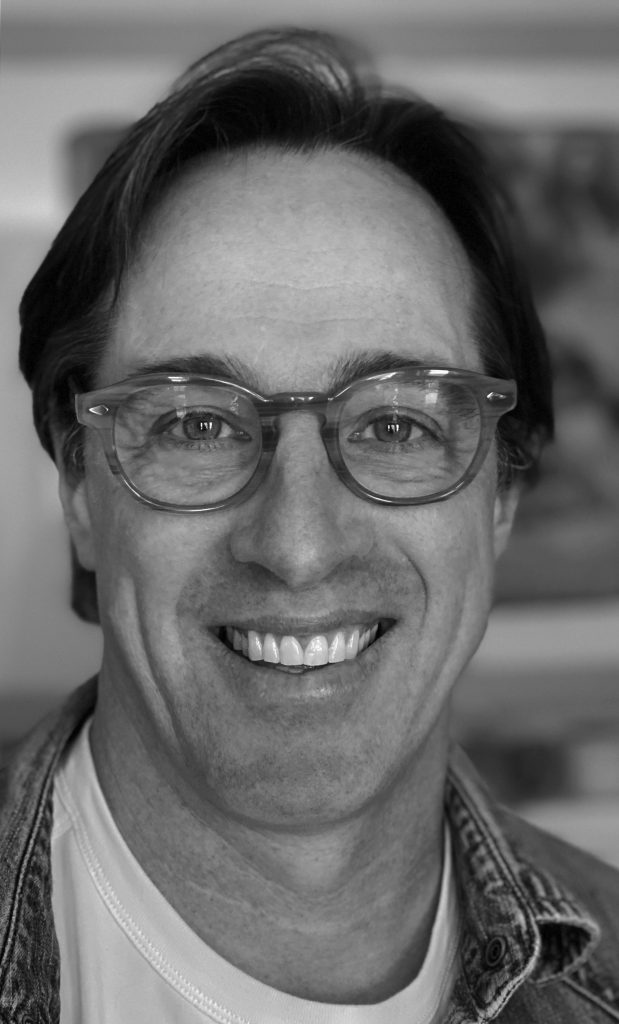- Programs
- Admissions
- Student Experience
- Research
- About
- Alumni
- Navigator
BIO
Faculty
Mark Bovey
Professor
Division of Fine Arts, Printmaking
Division Chair (July 1, 2025 - June 30, 2028)
CONTACT INFORMATION
Office Number: G205
Phone Number: 902-492-8209 (OP) or 902-877-7697 (Cell)
Email: mbovey@nscad.ca

Background
Mark Bovey is Associate Professor in Printmaking at the Nova Scotia College of Art and Design in Halifax, Nova Scotia, Canada (2004– present). Previously, he taught at Queens University for five years, at UBC Okanagan, and at Mount Allison University. He received his MFA in Printmaking from the University of Alberta, Edmonton Canada in 1992 and his BFA (1989) and BEd (Artist is the Community Education ACE) (1997) from Queen’s University in Kingston Ontario Canada. His practice and teaching ranges from traditional printmaking methods (combinations of Intaglio, lithography, screen printing, and woodcut) to digital, post-digital and print installations that incorporate digital video projection components.
His work has represented Canada internationally in juried biennial and triennial exhibitions in 19 nations worldwide since 1998, winning prizes at the Seoul Space Biennial 2008, Seoul Korea; Kochi Triennial 2007, Kochi Japan; Canadian Juried Travelling Exhibition Sense of Place 2009. He has exhibited in solo and group exhibitions nationally and internationally and been invited to 17 curatorial projects, including projects in Poland, Hungary, the United States, Canada and recently in Egypt. He has been invited to organize international exhibitions of work by Canadian artists in China and Russia and was awarded the top curatorial prize in 2009 at the 6th International Biennial of Printmaking in Novosibirsk, Russia, for the exhibition, Landscapes of Decay and Renewal in Canadian Contemporary Printmaking. In 2016–2018 and 2020 he represented Canada at the International Academic Printmaking Alliance (IAPA). The exhibition and symposium took place in the Peoples Ancestral Temple. This was the first exhibition of contemporary art inside Beijing’s Ancient Forbidden City.
CURRENT RESEARCH AND/OR CREATIVE PRACTICE
Images of current and past research referenced below are available on my website:
markbovey.com
—
As a descendant of colonial settlers living on turtle island, lands taken for the powers of the western world, who also looks through the lens of the medium of printmaking, my research starts by asking if the images of the printed past can reveal or help us better understand our problematic past. How have images— fragments as knowledge or technologies— now amassed in archives, shaped or mis-shaped the human experiment? Can images, as material culture, be recombined into new visual contexts, and across media platforms to arrive at new ways of seeing and knowing our past? When images are recovered from analog or electronic archives and composed into new contexts, can the meaning shift within the new context? What is uncovered by the poetic play, collision or compression back through the printing matrix?
My recent work involves utilizing images collected from an array of archives including the British Library in London, UK, and Mitchell Library in Sydney, AU. One decaying volume of Cyclopedic metal plate engravings, printed between 1802 and 1819 (Rees) I bought in 2014 has been deconstructed, and printed onto multiple times in transparent layers of colour using stone lithographic means. The pages were then sewn into two-page spreads and laid out on the floor to suggest a visual quilt of knowledge and as a bed for an exhibition in Lodž, Poland, that explored the history of printmaking and textiles. The pages have also been digitized at high resolution, altered and set against photos of cloudscapes. The portfolio of 20 images titled Pages of the Skies is intended to give the historical documents back to nature metaphorically. The process is about symbolically problematizing the residue of colonial histories that have brought us to the brink of environmental demise.
The Stone Wall for Alexandrina Project involves building a hyper-real printed wall of lithographic stones with the images recombined on them. The wall will be adhered to the actual wall in the Library of Alexandrina in Egypt. The stones, which hold a special place for lithographic printers, are capable of holding hundreds of images over time but were also used to build temples. The integration of ideas of knowledge control with and within architecture as monuments for conquerors, now seems conspicuous in relation to current humanitarian and environmental need. If research goes as planned the wall will also have video projections of water and fire that will suggest that the wall is being breached by the forces of nature brought forced to destruction by human greed. The virtual expression is both ironic and emblematic of all the technologies that came before and are represented on and in the wall as this wall is capable of being moved with ease and appear almost anywhere.
SIGNIFICANT PUBLICATIONS/EXHIBITIONS
Noted exhibitions include Last Frontier 2012 at the Art Gallery of Nova Scotia, Canada, A New World 2013 at the Modem Center for Contemporary Art in Debrecen, Hungary, Resonance 2015 at the Shengzhi Art Centre in Beijing’s 798 Art District in Beijing, China, and the 2016– 2018 and 2020 International Academic Printmaking Alliance (IAPA) Exhibitions, in Beijing and Jingdezhen, China. In 2020, work will be exhibited in the Okanagan Print Triennial in Vernon, BC, Canada and was invited to the Exhibition Anthem: 15 Expressions of Canadian Identity. The first stop is at the Canadian Language Museum in Toronto, Canada, 2021 and a show at the Library of Alexandrina, Alexandria, Egypt in 2022.
Works are in numerous collections that include the Canadian Foreign Affairs Visual Art Collection, Ottawa, Ontario; Kennesaw Museum of Art, Kennesaw, Georgia; The Art Gallery of Nova Scotia, Halifax, Nova Scotia; Tama Arts University Gallery, Tokyo, Japan; University of New South Wales, Sydney, Australia; Beijing Museum of Fine Art, and the Shengzhi Art Centre in Beijing’s 798 Art District, Beijing, China.
